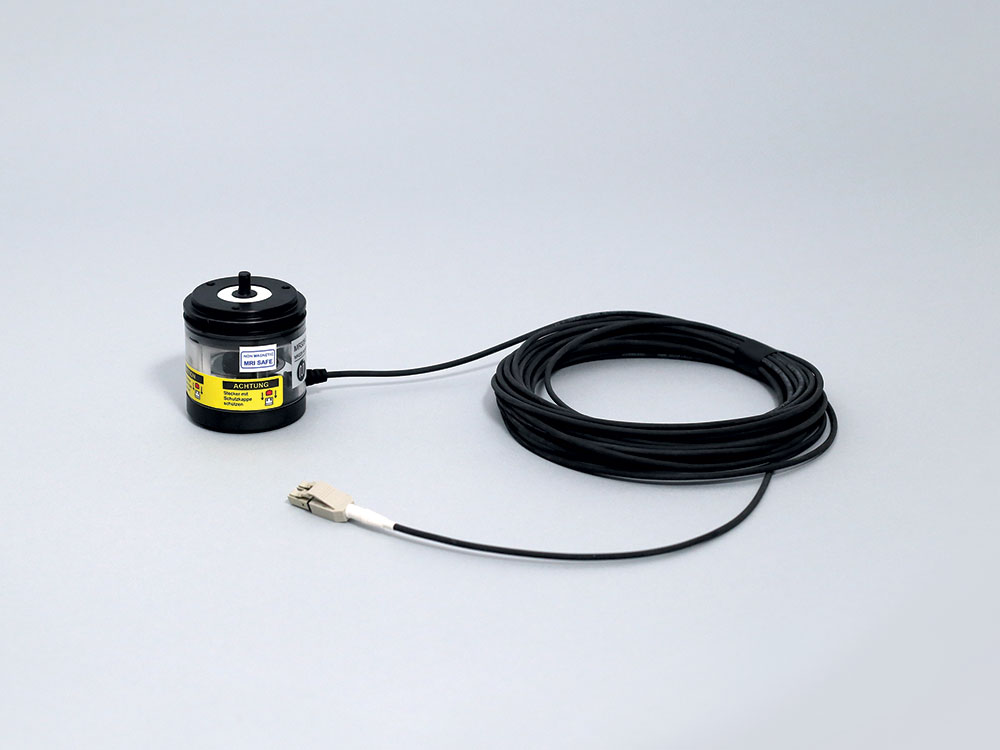
PHILIPS RESEARCH
MRI Safe Encoder Enables Multi-Modal Heart Phantom


Application Description:
Phillips Research (Briarcliff Manor, NY) engineers a variety of anatomically correct phantom human organs for the purpose of testing and calibrating MRI machines and their sophisticated software algorithms. Phantom organs are a more practical approach then using animals or cadavers and are also more repeatable for the purpose of calibrating the machines.
Requirements:
These organs are typically “powered” by pneumatics where the variation of air pressure provides the kinetic energy to the actuator for organ movement.
A challenge came up when a phantom heart had to be constructed. A heart consists of several muscles and the ventricles movement must be accurately synchronized. A position feedback with sufficient accuracy is required because the phantom heart must accurately mimic the biomedical properties of flex, compress, stretch and twist in an anatomically correctly fashion. All this must function within the MRI machine thus the feedback sensor must be immune to the high magnetic fields as well as the high RF fields that are generated by the MRI process. A further key requirement is that the sensor must be “transparent” to the MRI imaging process, meaning that the sensor may not interfere with the image acquisition and thus cannot have any ferro-magnetic properties or any conductive properties whatsoever.
The phantom organs are typically operated in a saline solution to mimic the real-life environment of the human body. Therefore, the sensors must be resistant to moisture and water sealed because they operate in a submerged environment.
Solution:
The customer selected the MICRONOR MR328 MRI-compatible incremental encoder with 360ppr resolution. This encoder is built from all plastic materials such as polycarbonate (PC) and polyoxymethylene (POM); the precision ball bearings are ceramic material.
This same fiber optic encoder has been used in numerous other MRI applications where the magnetic field immunity was verified within the actual environment. Further the “transparency” to the imaging process was first verified by Marquette University:
Citation:
Mehta et al, A novel technique for examining human brain activity associated with pedaling using fMRI, Journal of Neuroscience Methods, May 2009
Implementation:
The customers engineering personnel successfully implemented the Micronor encoders taking full advantage of the benefits of the fiber optics cables which lead the encoder signals to the outside of the MRI room to the controller unit. The phantom heart uses three encoders and requires three fiber optic links to be connected to the MR320 controllers. The controllers are linked with a first fiber optic segment leading into the MRI room where the encoder pigtails are joined using ST connectors. Micronor built the encoders having a10m long pigtail, thus avoiding any metallic parts within and near the MRI room.
The position of the phantom heart muscles are tracked by each controller unit (MR310) and are scaled to the built-in analog voltage output. The voltage output is fed into the servo controller which in turn controls the pneumatic actuators.
Fiber optic’s inherent immunity to EMI/RFI, magnetic fields and radiation has proven to be an enabler in fabricating a human phantom heart. MICRONOR’s ability to engineer kinetic sensors using only photons opens up the possibilities for new technologies, new products which allow for new and more efficient treatment methods within the realm of MRI.
Numbers:
60-100 Average normal resting heart rate for children (10 years and older) and adults
40-60 Average normal resting heart rate of a well-trained athlete
3 Number of encoders required for multimodal phantom heart
3 Three MRI safe, non-metallic encoders are offered by Micronor – MR303 Linear Encoder, MR328 Rotary Encoder, and MR338 Absolute Position Sensor
Micronor Products Used:
- EC-TD5253, Special waterproof version of MR318 MRI Safe Rotary Encoder, Qty 3
- MR310, Controller, Qty 3
- For new applications, use the MR328 Encoder and MR320 Controller
